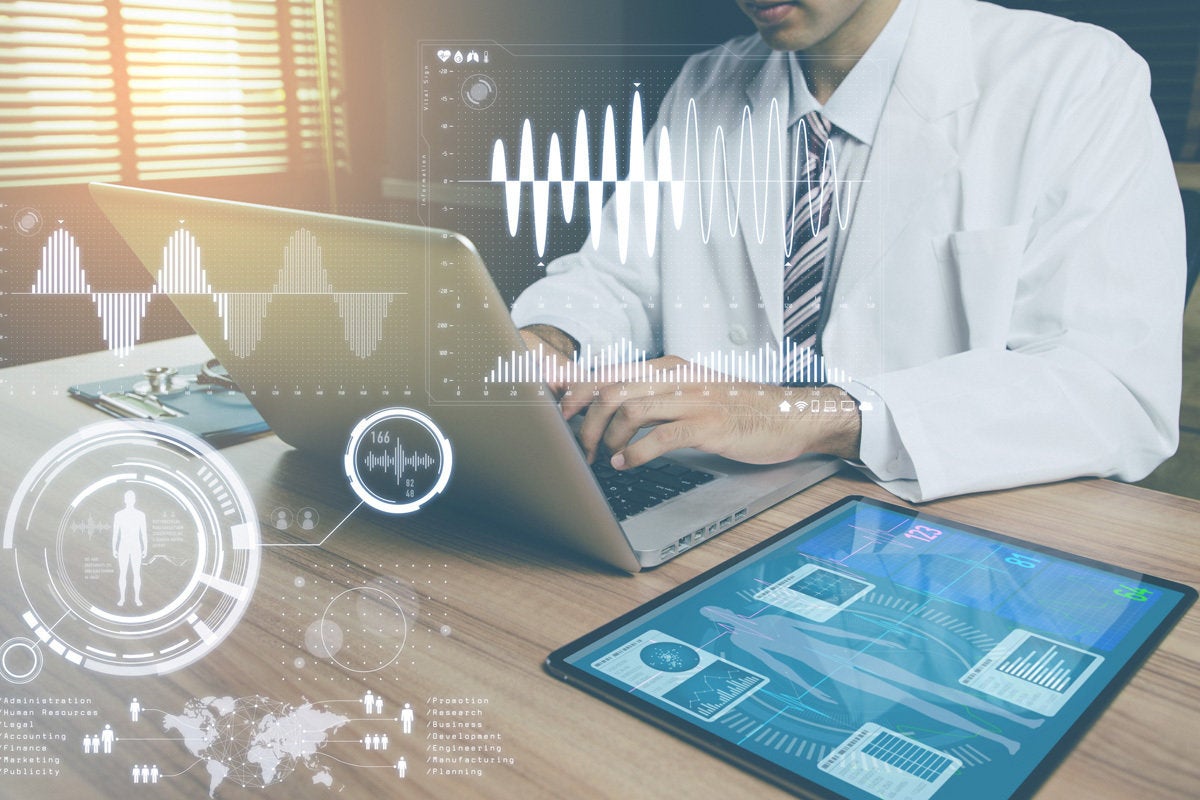10 Ways Technology is Transforming Warehouses

Sustainability is a hot-button topic these days, and this focus is changing nearly every industry in the world. Technology can help companies reduce energy consumption, cut down on product waste and lessen emissions while aligning with federal and local rules and regulations. Replacing traditional fluorescent lighting with LED alternatives can reduce power usage while saving the facility money. Smart warehouse designs rely on monitors to regulate power usage, becoming more energy efficient over time by preventing power ghosts from drawing energy when they’re not in use. Technology is helping warehouses become more sustainable, both in house and in their dealings with other facilities. Handheld devices, such as barcode scanners, have always been a part of the logistics and distribution industry, but recent advances have helped these devices become more efficient and useful than ever before. Warehouses that still rely on manual counts and physical paperwork should consider transitioning to digital inventories and handheld devices equipped with RFID scanners and GPS to increase efficiency and reduce theft and inventory loss.
How to write a good data governance policy
I find that getting principles agreed is a lot easier than asking a group pf people what they want included in a data governance policy. Plus the conversation around the principles will give you a really good idea about what they want covered in their policy. Once you've drafted and circulated those principles for feedback, you should be able to make amendments and agree a list of principles. With the principles agreed drafting your policy in accordance is fairly straightforward. However, don't make the mistake of believing that once it is drafted that everyone will immediately approve it because they already agreed the principles. Seeing the detail in black and white often gives rise to more questions, suggestions or changes from your key stakeholders At this point, I really have to emphasize that for data governance to be successful, you need the senior stakeholders engaged. So the answer is not to tell them they're wrong, or to railroad them into accepting what you want to have in the data governance policy.
Small business cybersecurity: The case for MSSPs

Clearly, the industry favors using AI and automated tools, which requires qualified personnel—something small businesses often lack. The good news is most MSSPs enhance their managed approach by using automated-security technology. This likely gives MSSPs the edge with small-business owners according to Canner. "By hiring a managed security provider, your enterprise could save money in the long term. Not only will you save on the costs of finding, hiring, and training new cybersecurity personnel, your enterprise can also reduce the number of cybersecurity members on staff." Venkatesh Sundar, founder and CMO at the MSSP Indusface, in this Trak.in article suggests that small businesses with web applications (most nowadays) may especially benefit from MSSPs that employ Managed Web Application Firewalls (MWAFs) as the first line of defense against malicious actors. "A MWAF ... supports custom and complex rules based on the needs of your business," writes Sundar. "An intelligent, managed WAF gives decision-making power to you or the security analyst to either block, flag or challenge requests."
Froid and the relational database query quandry with Dr. Karthik Ramachandra

If you look at relational databases today, the primary way to interact with the database is through this language called SQL, or structured query language, which falls under this declarative paradigm of programming, which basically says the user needs to tell the system what they need in this declarative high-level language, and the system figures out an efficient way to do what the user has asked. So that’s sort of one main paradigm, or the primary way we interact with databases today. That comes with the advantage that, you know, the users can stay at a higher level of abstraction, not having to go to the detailed implementation of how things are done. And it also allows the system to optimize and come up with efficient algorithms to solve the query or the question that the user is trying to ask. That is one paradigm, and on the other side, we have this imperative program style which is a slightly lower level of abstraction in the sense you are basically telling the system how to go about doing what you want it to do. And, as a result, you’re sort of binding the system to implement it in the way you are telling it to do.
Forget about artificial intelligence, extended intelligence is the future

While one of the key drivers of science is to elegantly explain the complex and increase our ability to understand, we must also remember what Albert Einstein said: “Everything should be made as simple as possible, but no simpler.” We need to embrace the unknowability – the irreducibility – of the real world that artists, biologists and those who work in the messy world of liberal arts and humanities are familiar and comfortable with. ... In order to effectively respond to the significant scientific challenges of our times, I believe we must respect the many interconnected, complex, self-adaptive systems across scales and dimensions that cannot be fully known by or separated from observer and designer. In other words, we are all participants in multiple evolutionary systems with different fitness landscapes at different scales, from our microbes to our individual identities to society and our species. Individuals themselves are systems composed of systems of systems, such as the cells in our bodies that behave more like system-level designers than we do.
These are the industries most likely to be taken over by robots

Workers in industry sectors like food service and manufacturing spend much of their time doing physical tasks in a predictable environment, and so are susceptible to automation. Meanwhile, industries like education and health care involve much more interpersonal work and application of deep expertise, competencies which current robots and software lack. McKinsey pointed out that their analysis focused on what tasks could potentially be automated using current technology, which doesn't necessarily mean that these jobs actually will end up being more heavily done by robots and software. Other economic and social concerns, like the cost of labor relative to new investment in advanced machines and the public's willingness to have robots do things like serve them food, are likely to be big factors in whether or not various jobs and tasks actually do become automated, according to the report.
The growing demand for managed detection and response (MDR)

According to ESG research, 82% of cybersecurity professionals agree that improving threat detection and response (i.e. mean-time to detect (MTTD), mean-time to respond (MTTR), etc.) is a high priority at their organization. Furthermore, 77% of cybersecurity professionals surveyed say business managers are pressuring the cybersecurity team to improve threat detection and response. So, what’s the problem? Threat detection and response ain’t easy. In fact, 76% of those surveyed claim that threat detection and response is either much more difficult or somewhat more difficult than it was two years ago. Why? Cybersecurity professionals point to issues such as an upsurge in the volume and sophistication of threats, an increasing cybersecurity workload, and a growing attack surface. Oh, and let’s not forget the impact of the cybersecurity skills shortage. Many firms lack the right staff and skills to make a significant dent in this area. Rather than deploying yet another point tool or muddle through, many CISOs are turning to third-party service providers for help, making managed detection and response (MDR) one of the fastest-growing segments in the cybersecurity market.
How cloud services can empower the future of work
More often than not, businesses are stuck with legacy applications and tools. As a result, employees rely on email and word processing for business communication. They depend on shared network drives and content management systems to store, organize, secure and access files. Users connect first to one application and then another to schedule appointments, develop plans, allocate resources, track results, make payments, update images and accomplish a whole host of business activities that are integral parts of their everyday jobs. Today's employees work in an application-centric -- not a task-centric -- environment. Cloud-powered connectivity promises to transform the future of work. Modest additions to existing personal productivity tools and enterprise applications can go a long way toward modernizing the workplace. Employees and workgroups can focus on their immediate tasks at hand, save time and enhance productivity.
Why wearables, health records and clinical trials need a blockchain injection

"Patients can become owners of data and, with their consent, share data with practitioners and allow them to sell anonymous data to buyers," said Mehta, who took part in the blockchain-and-healthcare panel. By enabling patients to add their own details around lifestyle – what they eat, how much they exercise and sleep, a personal health record would offer physicians greater personal insights for more targeted clinical decision making. In order to securely record, share and crunch vast amounts of sensitive data coming from external sources such as wearable medical devices and fitness trackers, a standardized database with artificial intelligence capabilities is needed. ... Blockchain uses hashing, the creation of a unique digital signature for each encrypted block of data added to an electronic distributed ledger. The hashes map back to encrypted patient data as it's added sequentially to a blockchain ledger – and because it's immutable, it creates an audit trail for government oversight. Smart contracts – self-executing business automation apps – can also be used atop blockchain to automatically ingest and process new data.
Millennials, changing meeting priorities drive huddle room trends

Huddle rooms equipped with conferencing technology enable small meetings to happen without taking up an entire boardroom. Nearly 65% of people believe that at least half of huddle rooms within an organization need video conferencing tools, according to a Cisco-sponsored report from market research firm Dimensional Research. "We've been talking about getting video conferencing out of boardrooms and out to the masses for a while now," said David Maldow, founder of market research firm Let's Do Video. "Huddle rooms make video technology accessible to everyone." Meeting culture has become far less formal and scheduled. Teams now are focusing on increased productivity, requiring spaces that they can access quickly for impromptu meetings or last-minute brainstorming sessions. Unlike boardrooms, which are typically designed for larger-scale planned meetings, the trend for huddle rooms and ad hoc spaces is to design them to fit into smaller team workflows. According to the Dimensional Research study, 55% of respondents said that meetings held in huddle rooms helped increase productivity.
Quote for the day:
"Uncertainty is not an indication of poor leadership; it underscores the need for leadership." -- Andy Stanley
No comments:
Post a Comment